Dreyze Pistol Model 1907 of the Year (1907 Dreyse Pistol): device and disassembly procedure
The new owners acquired not only the plant, but also the rights to the patents and the Dreyse name. After that, RM&M began producing several types of firearms under the Dreyse trademark.
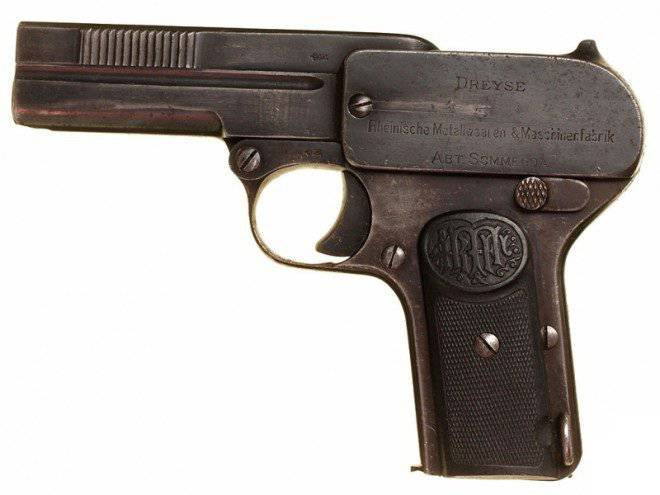
Dreyze Pistol Model 1907 of the Year Dreyze Pistol Model 1907 of the Year (1907 Dreyse Pistol) was patented on February 21, 1908 by Rheinische Metallwaren & Maschinenfabriken. The pistol was designed by Louis Schmeisser, although his name did not appear on the patent.
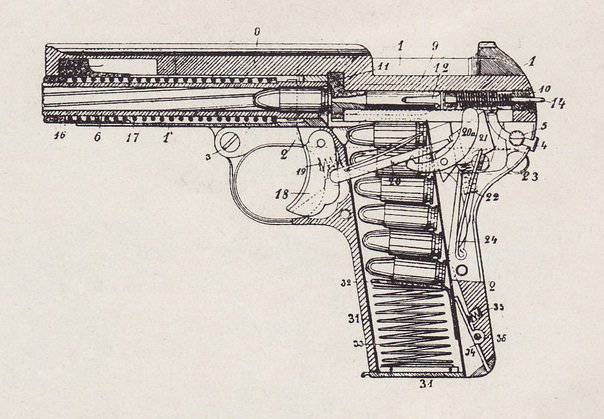
This patent describes the design of the bolt and front sleeve, fixing the return spring, without focusing on the hinge connection. Automatic pistol works by returning the free shutter. The box-shaped detachable gun magazine is designed to accommodate 7 ammunition Browning caliber 7.65mm Auto (.32ACP). The total length of the gun 160 mm, weight without cartridges 710 grams, barrel length 93 mm has four right-inclined rifling.
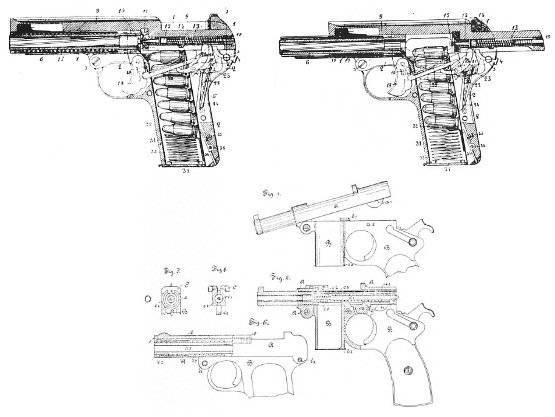
There is another RM & M patent, registered in Germany under the number 185411, dated January 4, 1906, which shows a similarly designed hinge joint between the pistol frame and the receiver. The drawings for the patent show a pistol very similar to the Bergmann Simplex. Probably this patent became the basis for the technical solution in the Draize 1907 pistol.
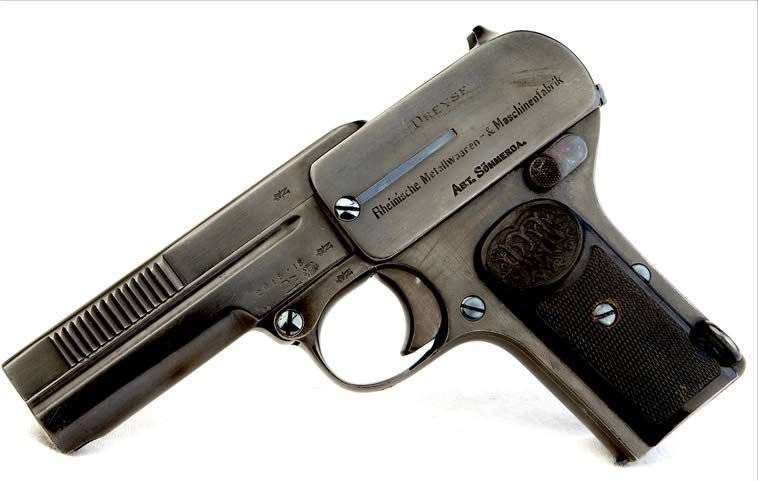
The success of the Browning pistol at the beginning of the 20 century pushed many designers to copy the design of this pistol. The Dreyse 1907 pistol was also designed under the strong influence of the Browning design of the 1900 model of the year. The tilt angle of the handle, the caliber of the ammunition used, the design of the store, the amount of ammunition, the principle of operation of the automation, the design of the magazine latch, the design and location of the fuse are very similar to the Browning 1900.
However, Louis Schmeisser introduced a lot in the design of the gun. The return spring from the Dreyse 1907 model is placed around the barrel, and not above it, like the Browning. The original design of the front sleeve makes it easier and without loosening the screws to do an incomplete disassembly of the weapon. The swivel top of the gun with the frame simplifies maintenance and cleaning of the weapon.
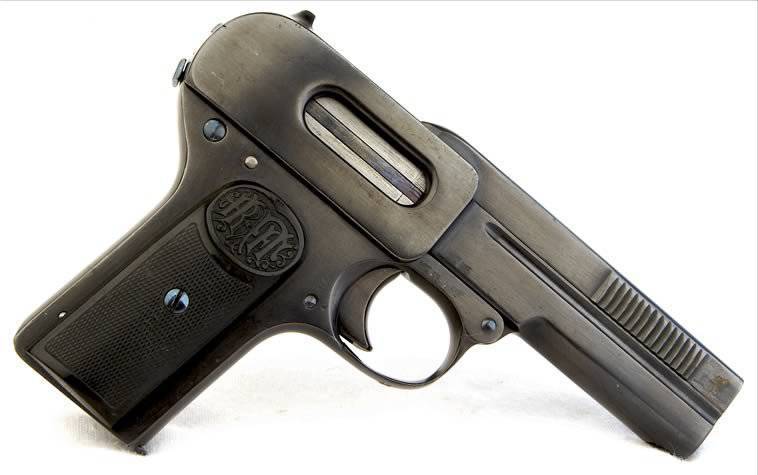
The fixed part of the receiver closes about three-quarters of the shutter. For this reason, the notches for the convenience of gripping the bolt by hand are located in front, not far from the muzzle. On the right side in the receiver there is an oval window for extracting the spent cartridges. The ejector, which is a flat narrow plate placed on the right side of the shutter.
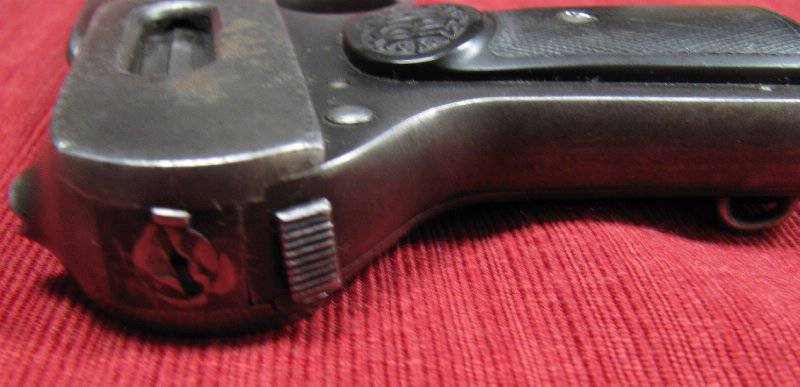
A button with a vertical notch is mounted on the back end of the gun. When the button is moved to the right, the upper part of the pistol: the barrel with the receiver and bolt is separated from the back of the frame and rotates upward with respect to the frame. In a pistol standing on a platoon to move the button and open the receiver is impossible.
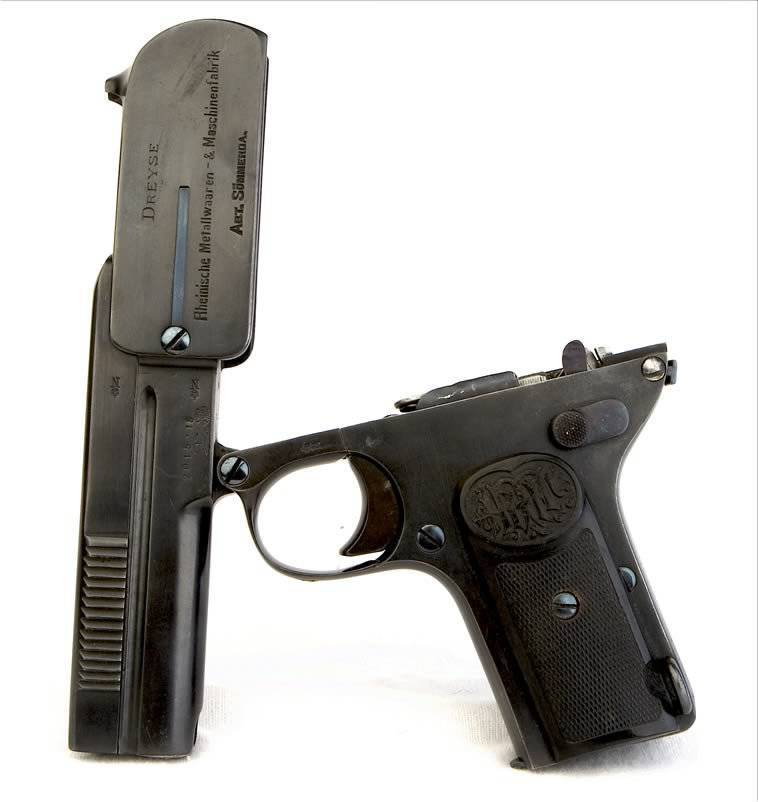
Articulation of the upper part of the gun contributes to the ease of cleaning, lubrication and maintenance of weapons. In addition, it facilitates disassembly of the pistol and removal of the bolt from the receiver. The reflector plate is installed on the left side of the receiver. The reflector is fixed in the receiver with a screw. The bolt contains a drummer, an ejector and a platoon indicator.
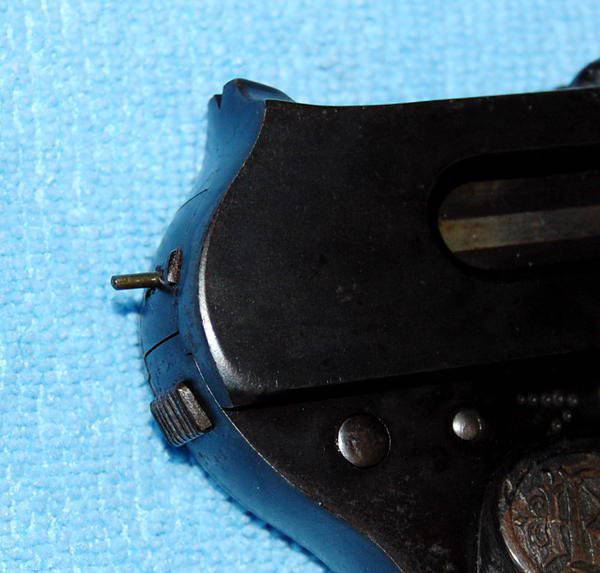
The Dreize pistol of the 1907 model of the year has a pointer of a cocked drummer in the form of a rod protruding from the back of the bolt.
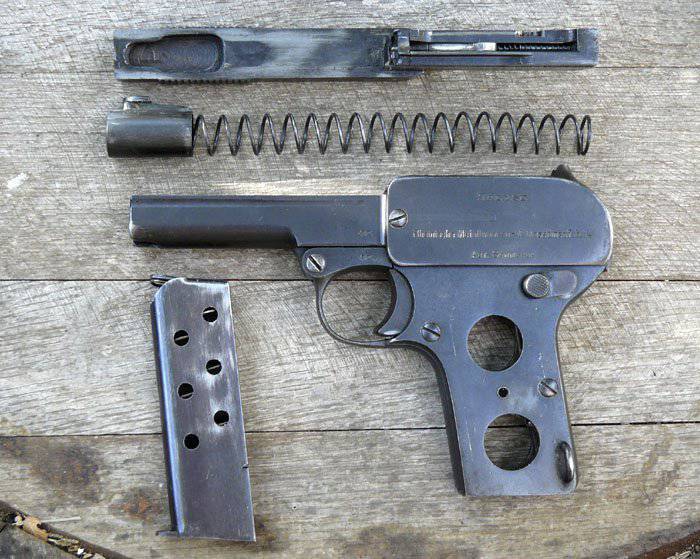
The barrel is fixed in the receiver and pivotally connected to the frame of the gun. The screw that holds the reflector simultaneously fixes the barrel in the receiver. After unscrewing this screw, the barrel can be unscrewed from the receiver using a special tool. The recoil spring is held in place around the barrel with a sleeve located in front of the receiver. The protrusion "t" -shaped in the upper part of the sleeve is included in the recess of the lower part of the gate. When you move the bolt back, he pulls the sleeve, which compresses the return spring. In early pistols, the protrusion was located not on the sleeve, but on the gate.
The trigger pistol Dreyse gun model 1907 of the year (1907 Dreyse Pistol) fairly simple design. The trigger lever connects the trigger with the sear. The uncoupler, which has the shape of a crescent on most pistols, retracts the trigger lever when the shutter moves and therefore it cannot touch the sear until the shooter releases the trigger.
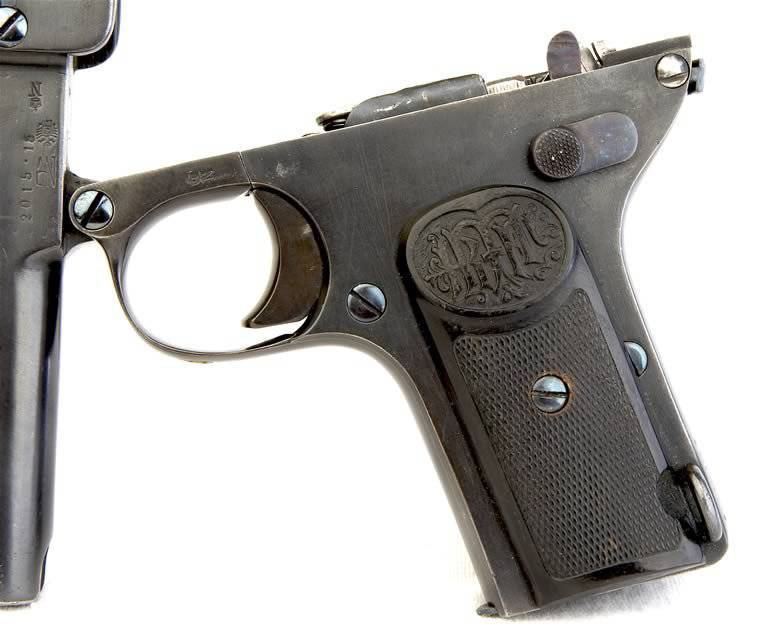
The trigger mechanism during the entire production periodically subjected to modernization. Basically the form was whispering. The early whispers just let the drummer go. In pistols of a later release, the drummer was a little backed away, additionally compressing the mainspring, and only then let them go with the platoon. This was done to ensure uninterrupted pistol shooting when contaminated, at low temperatures and when using ammunition with tougher primers. The manual safety device located in the rear part of the frame on the left reliably blocks the sear in the on state. Access to the details of the firing mechanism is possible after unscrewing the screws and removing the side plate of the frame located under the left cheek of the handle.
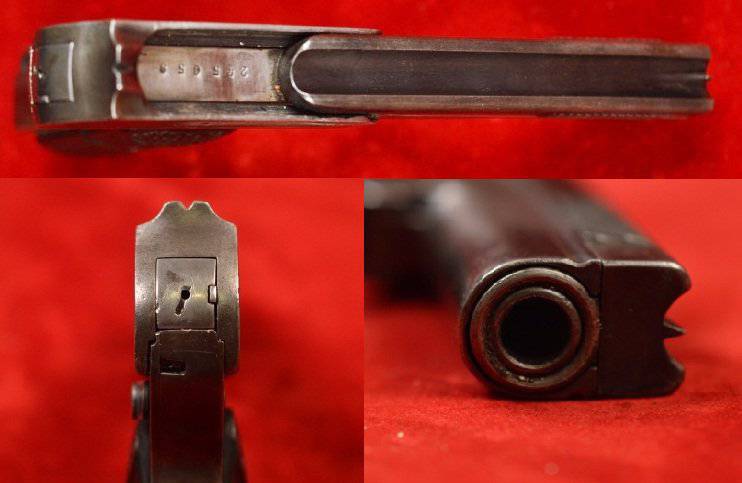
Sights gun represent the rear sight in the upper part of the receiver at its rear slice and front sight in the upper part of the shutter, almost at the muzzle. The front sight is recessed into a semicircular recess in the upper part of the shutter and the aiming line is limited by the edges of this recess.
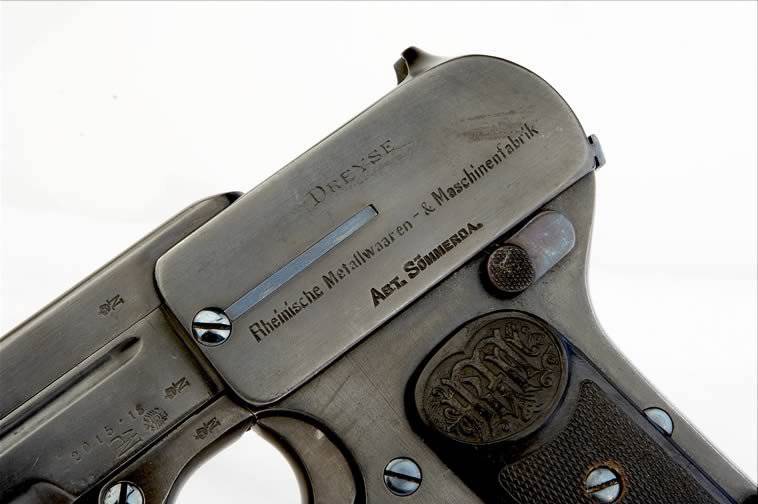
Early pistols were marked on the left side of the receiver with the text DREYSE Rheinische Metallwaren- & Maschinenfabrik ABT. SOMMERDA ".
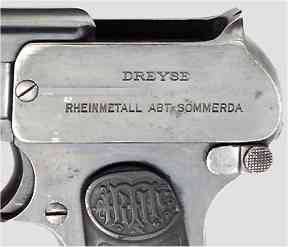
Later pistols were marked “DREYSE RHEINMETALL ABT. SOMMERDA. For pistols fired after 1914, the word "Dreyse" disappears from the labeling. The cheeks are black with a notch and a monogram in the form of the letters “RMF” in the upper part of the cheeks. Pistols issued for the police have certain marking features.

The serial number of the pistol is stamped on the right of the receiver above the trigger guard, as well as on the top of the bolt.
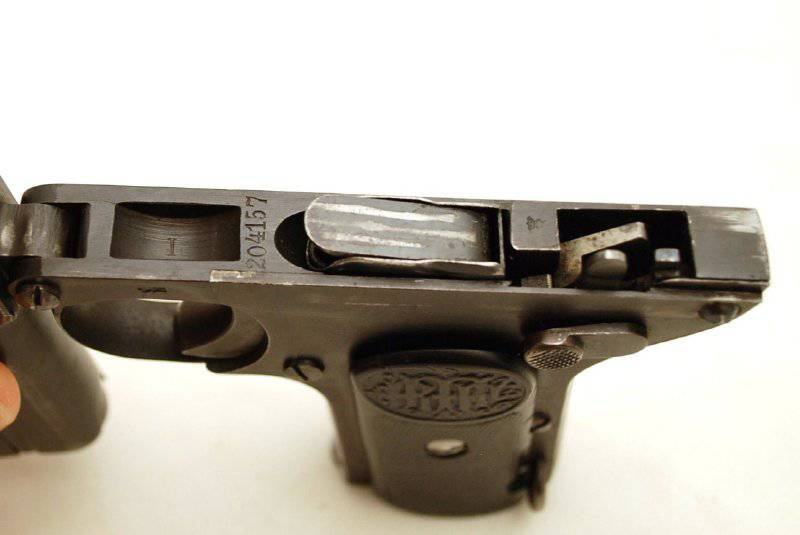
The serial number can also be seen on the top of the pistol frame in front of the store placement window. The highest serial number that is mentioned among researchers and collectors is #251211. The Dreyze pistol model 1907 of the year was produced in the period from 1907 to 1915 year. A total of probably less than a quarter of a million copies were released.
The procedure for disassembling the gun Dreyse sample 1907 of the year (disassembling 1907 Dreyse Pistol)
Disassembling the Dreyze pistol of the 1907 model of the year, like any other weapon, begins with security measures. For this purpose, we first remove the magazine from the pistol grip by first pressing the magazine latch forward (toward the muzzle end of the pistol).
We check the absence of a cartridge in the chamber, for which, while holding the front part of the bolt with a notch, we take it to the extreme rear position and inspect the chamber through the window on the right side. We release the bolt, pull the trigger, removing the drummer from the platoon.
Move the locking tab on the back of the gun to the right.
Turn on the axis of the upper part of the gun with the barrel and bolt, separating the back of the receiver from the frame of the gun.
Using a screwdriver or another tool, push the return spring bushing to disengage it from the bolt. In this case, the sleeve must be held with the thumb of the left hand so that under the action of a rigid return spring the sleeve does not fly out and cause injury.
Remove the sleeve and the return spring from the receiver of the gun.
To separate the bolt from the Drayze 1907 pistol, move the bolt to the rearmost position, lift its leading edge and remove it from the receiver.
To disassemble the valve, it is necessary to separate the ejector. After that, unscrew the guide rod of the combat spring from the back side of the bolt with a screwdriver and remove the rod with the spring. Next, turn clockwise the shutter head and separate it from the shutter. After that, we extract from the gate the drummer. The incomplete disassembly of Dreyse's gun, model 1907, is completed. Assembling a Dreyse 1907 pistol is done in reverse order.
Complete disassembly includes detachments from the frame of the receiver and parts of the firing mechanism. To separate the receiver from the frame it is necessary to unscrew the fastening screw. Parts of the firing mechanism are separated from the frame after removing the left cheek of the handle and unscrewing the screws securing the frame cover. It is advisable to carry out a complete disassembly of Dreize’s 1907 model pistol of the year only as a last resort, since assembling a weapon after complete disassembly is a rather painstaking task. Basically, a complete disassembly is carried out when necessary to repair weapons.
Dreyse pistol was equipped with a holster with a compartment for storing a spare store. Weapons have become quite popular due to the simplicity of design, compactness and reliability. Dreyze 1907 pistol was used not only in the civilian market, where he enjoyed high demand, but among the military and the police. The Dreize Model 1907 of the Year was purchased by the Saxon and Berlin Municipal Police. In 1912, it began to be used as a military pistol and became a replacement pistol for staff officers and rear troops. The pistol was purchased to arm parts of the army of Austria-Hungary and Czechoslovakia. There is evidence that the order of 2000 pistols was purchased for the Russian Army. Researchers mention several gun accidents, which are explained by loosening the latch at the back of the frame, thanks to which the drummer spontaneously falls from the whisper and a shot occurs.
Pistol Dreyze sample 1907, and used during the Second World War, the soldiers of the Wehrmacht. The gun was in service in the German divisions Volksgrenadiere and Volkssturm. After the end of the Second World War, the American soldiers carried these pistols as trophies home. Because of this, pistols are often housed in private collections. Due to the large spread, the auction price for the Draize 1907 pistol is not very high and is on average about 350 dollars.
Dreyze's gun of the 1907 model of the year is rather unusual weapon in terms of order and sequence of disassembly. This is due to the feature of the device the top of the gun, as well as a method of fixing the bolt in the receiver. This video best demonstrates the device of the gun and shows the correct order of disassembly and assembly of weapons.
The second video about the Dreyse 1907 pistol is very short. It is interesting because it was shot in slow motion. Shooting from a pistol is shown in such detail that the viewer sees the moment when a bullet leaves the barrel, then a breakthrough of powder gases when the bolt is unlocked, and then the cartridge is removed and the new cartridge is sent to the chamber.
The last video shows just the Dreyse 1907 second pistol shooting. The shooter demonstrates the operation of the cocked drummer indicator, shows how to remove the magazine from the weapon. In the process of firing, distortions occur several times, which are likely to be associated with the contamination of the gun.
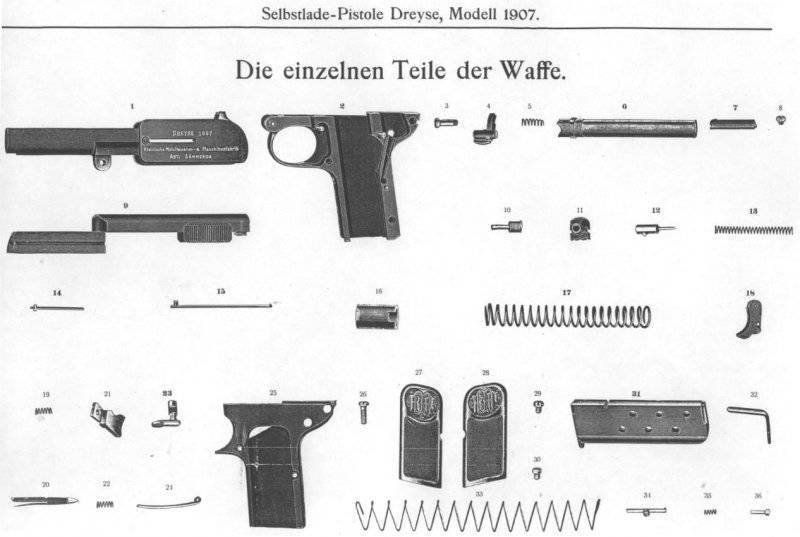
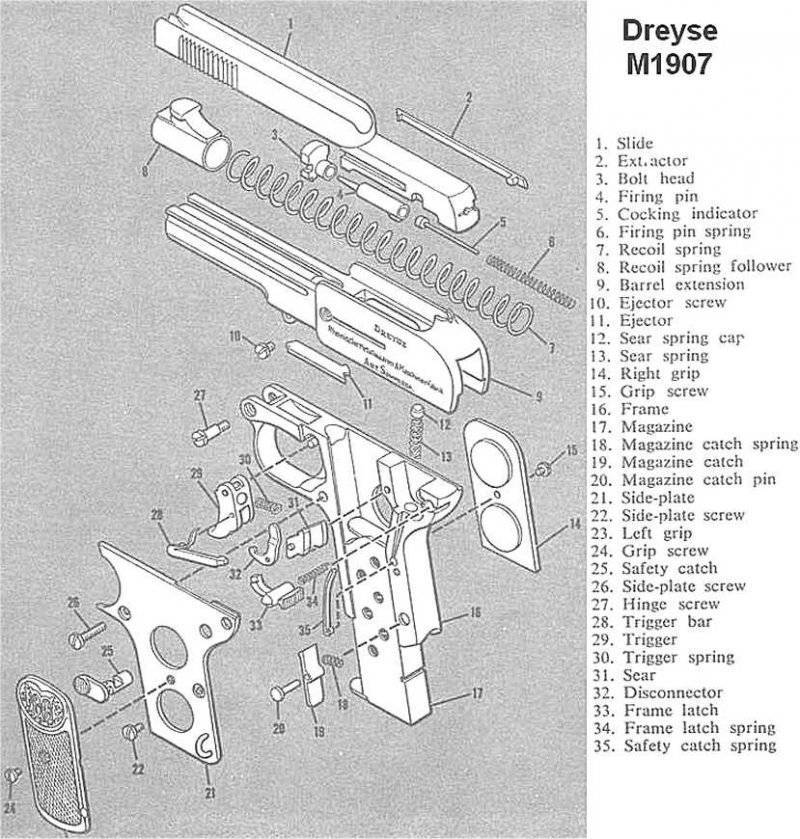
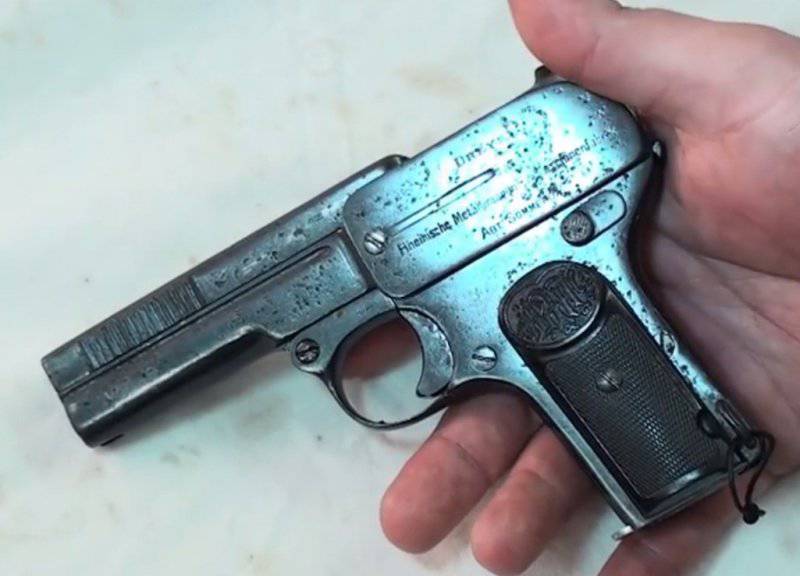
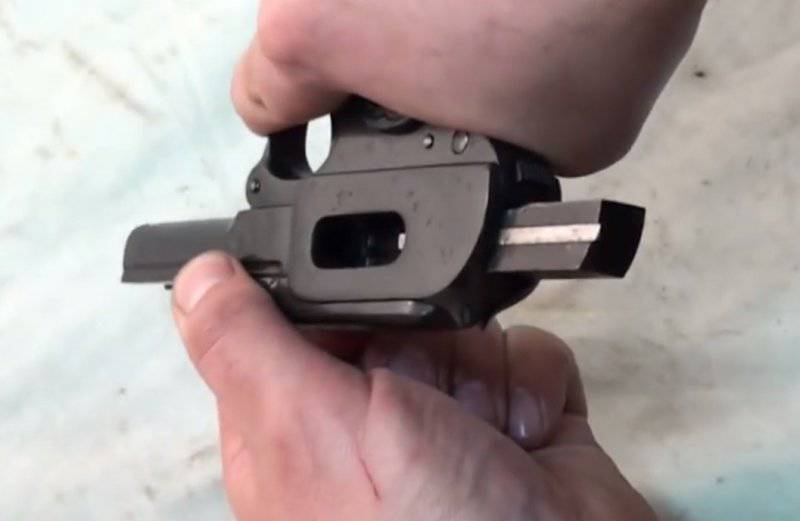
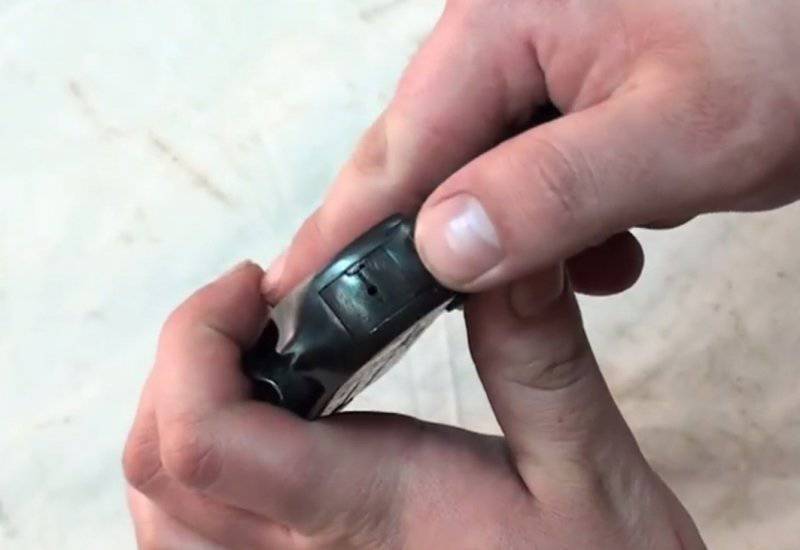
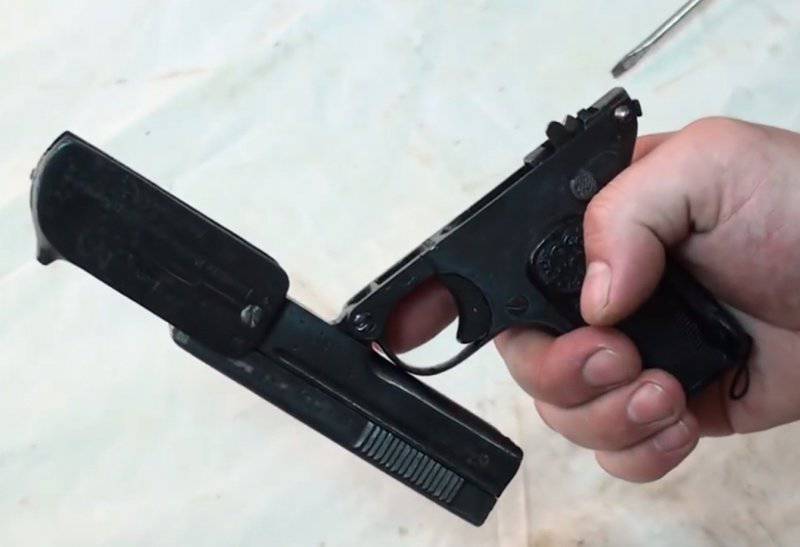
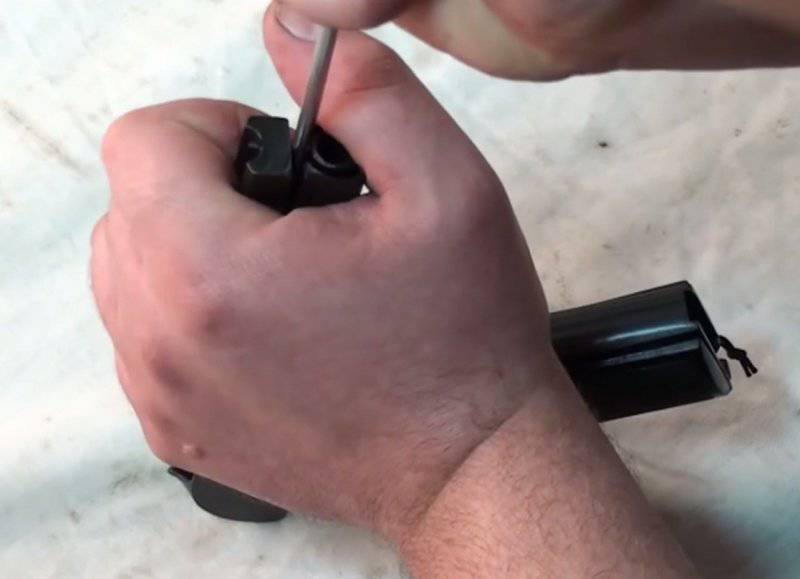
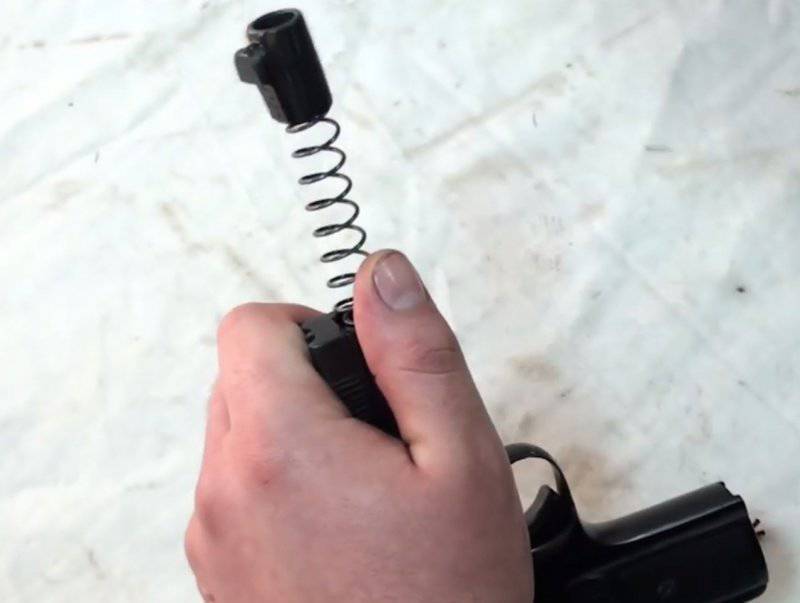
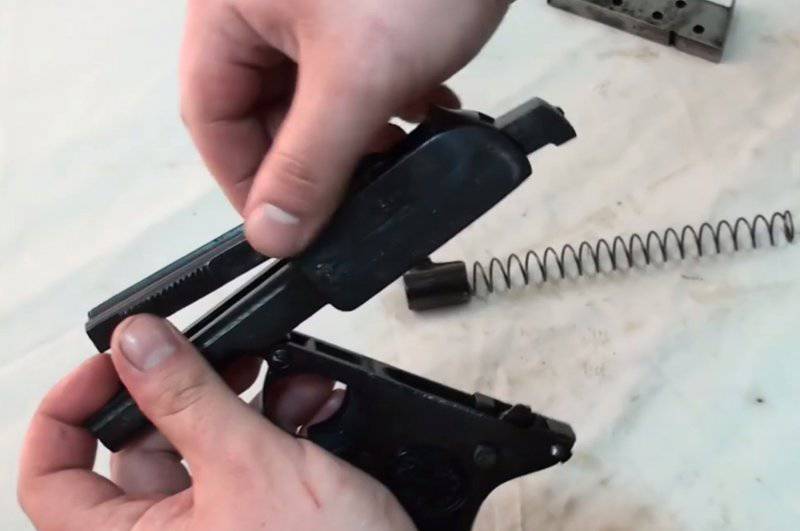
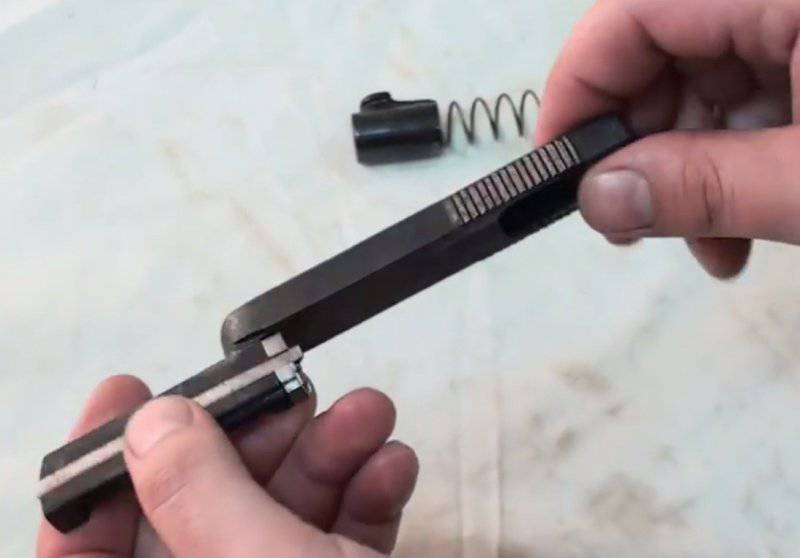
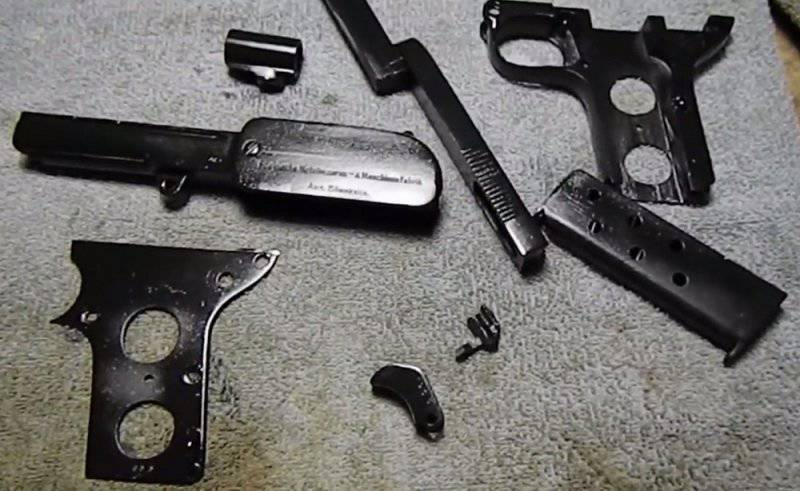
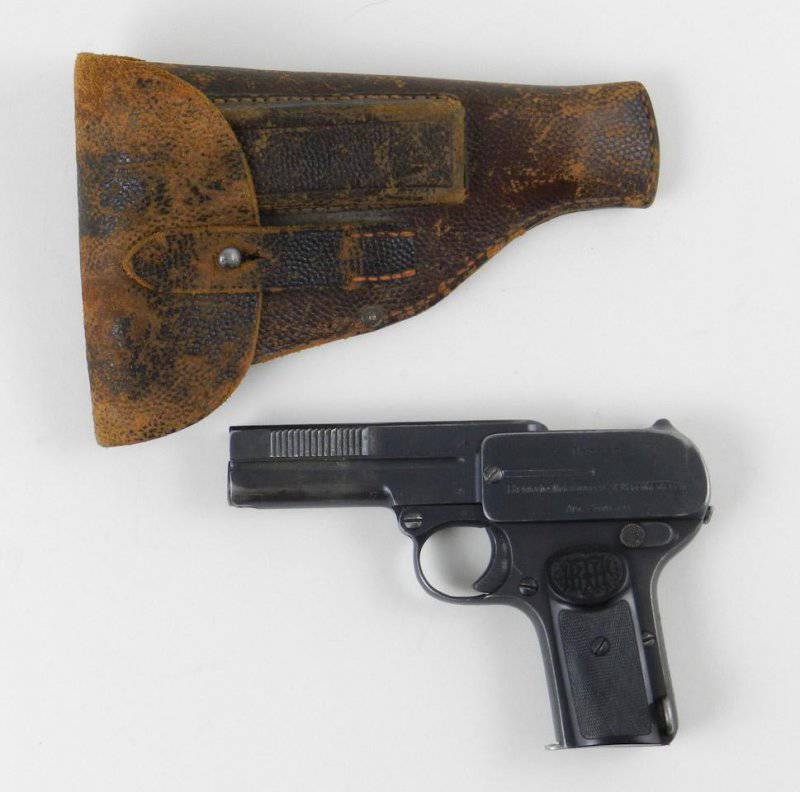
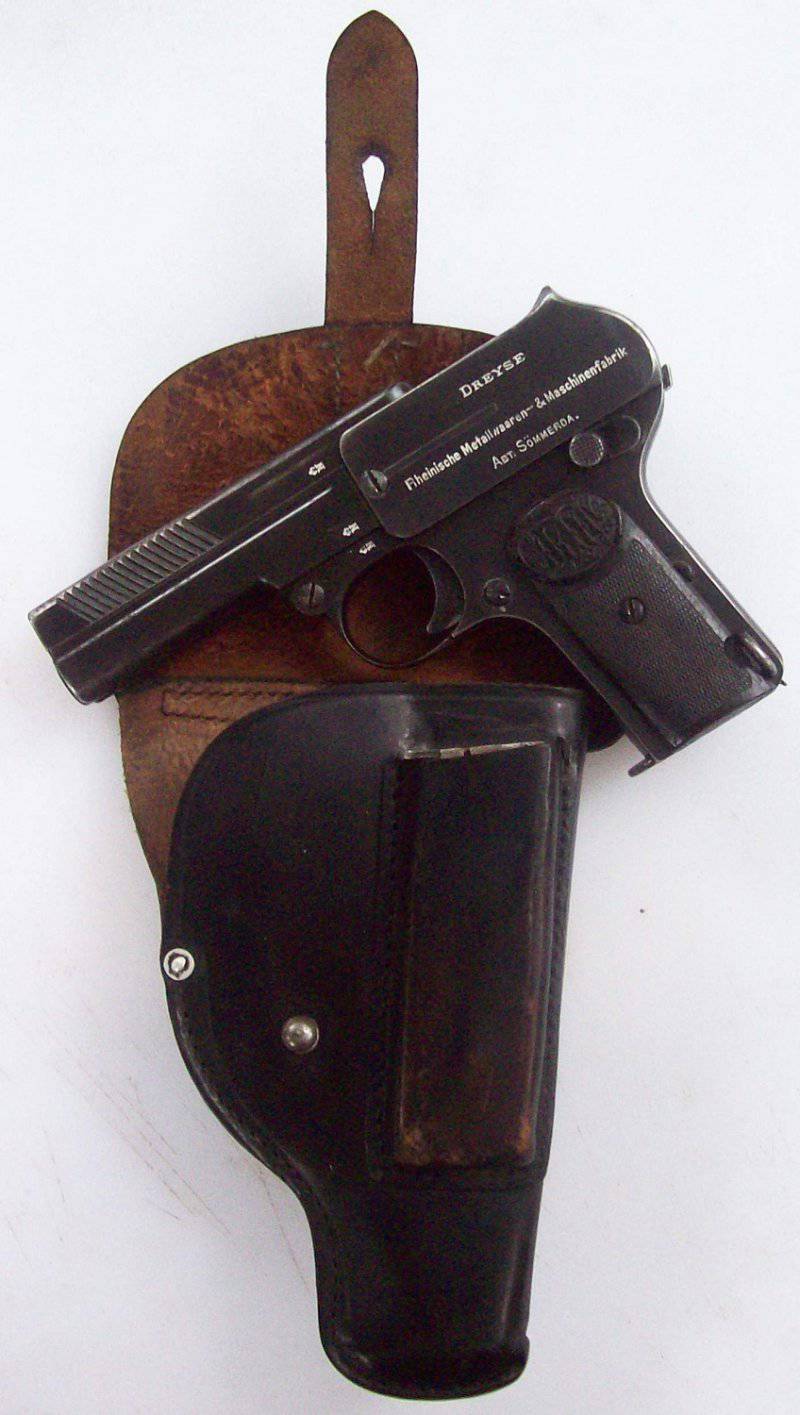
Information